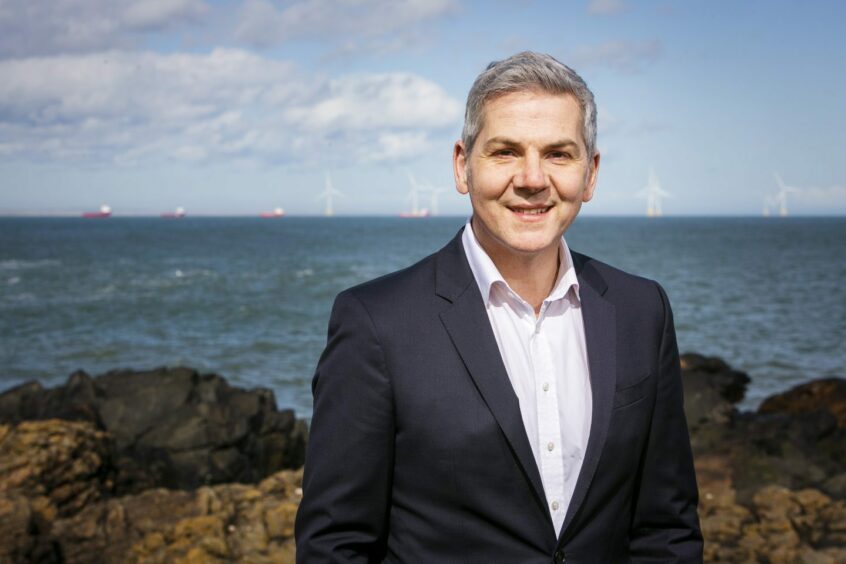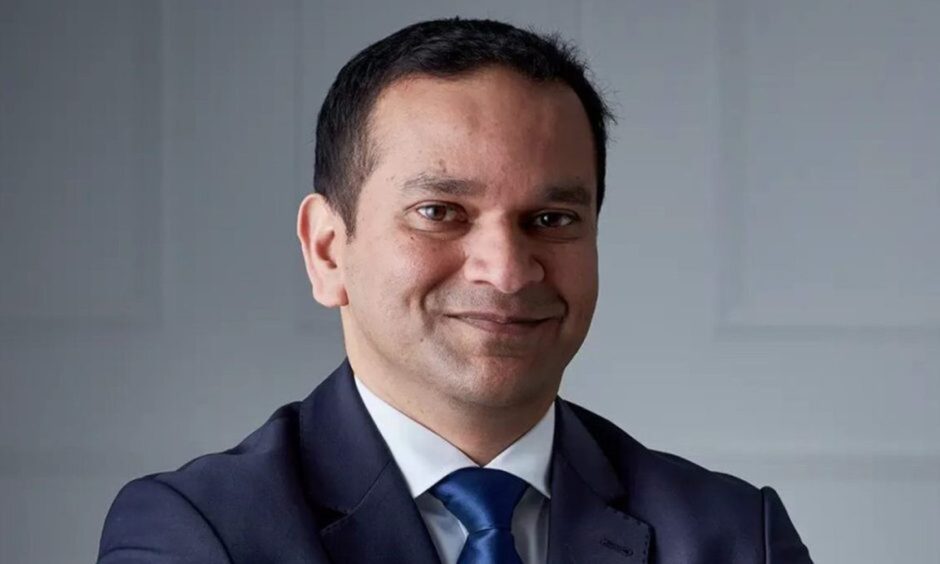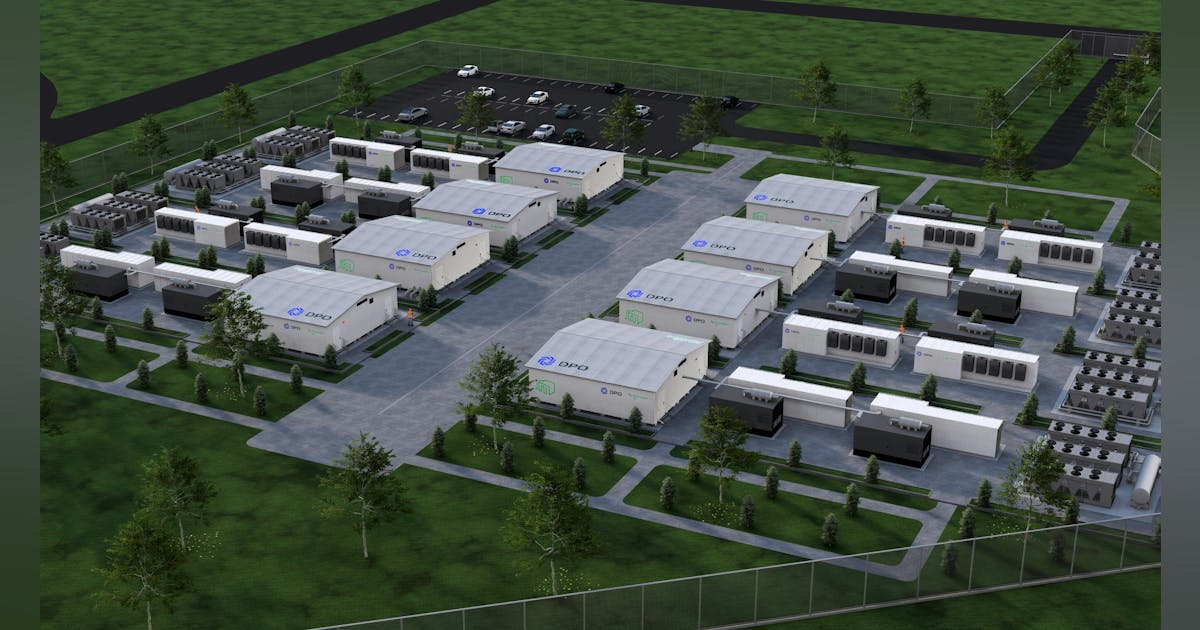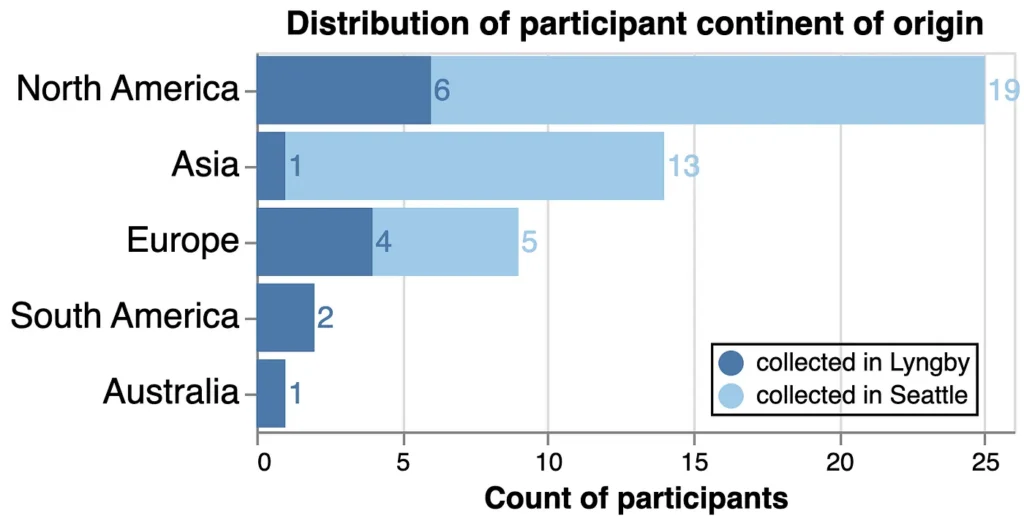Claire Mack has joined the Scottish Offshore Wind Energy Council (SOWEC) as its new industry co-chair.
Mack was appointed by minister for climate action Dr Alasdair Allan to represent Scotland’s offshore wind industry for a two-year term.
She will provide strategic leadership to SOWEC and work alongside the partnership’s subgroups and developer forum to deliver sector growth.
In addition to her new role, Mack has been chief executive of Scottish Renewables since 2017. She is responsible for leading the organisation’s work to grow Scotland’s renewable energy industry and maintaining its position as a global leader in clean power.
She replaces Brian McFarlane, SSE Renewables head of offshore development, who announced his intention to step down as SOWEC industry co-chair late last year.
Since SOWEC’s inception in 2019, he has acted on behalf of Scotland’s offshore wind industry to drive forward SOWEC’s mission to coordinate and grow the sector.
Acting minister for climate action Allan said: “Offshore wind is at the heart of the Scottish Government’s economic development agenda and the SOWEC is vital to driving forward action in support of the sector.”
Mack added: “Offshore wind is one of Scotland’s key assets and our ability to turn our 40GW pipeline into successfully delivered projects is pivotal to our environmental and economic aspirations.
“As I step into the role of co-chair at SOWEC during this critical point for Scotland’s £4 billion offshore wind sector, I would like to express my sincere gratitude to my predecessor, Brian McFarlane, for his untiring dedication and contribution to the sector.”
 © Supplied by Offshore Energies UK
© Supplied by Offshore Energies UKDoris Reiter, BP senior vice-president for the North, has taken over as operator and developer chair on the board of Offshore Energies UK (OEUK).
Having previously served as vice chair to the board, she succeeds Neil McCulloch in her new role.
In addition, Scott Barr, managing director UK business unit at Harbour Energy, has taken on her position as operator and developer vice-chair.
The new appointments will help driving OEUK’s strategic agenda for the offshore energy sector and its stakeholders.
The trade body also appointed four new industry leaders to its board, including a leading figure representing the emerging offshore wind sector.
The four new members appointed to the OEUK Board are Ithaca Energy CEO Luciano Vasques, Kellas Midstream CEO Nathan Morgan, SLB corporate ventures and new energy UK director Diane Frachon, and Flotation Energy managing director Barry MacLeod.
The move demonstrates the industry’s commitment to a sustainable future and reflects the growing number of OEUK members that are expanding into renewables, while continuing to drive ever cleaner energy production.
Reiter said: “Connecting our intellect, innovation and diversity of experience will be our shared driving force as we continue delivering the homegrown energy the UK needs today – and I’m extremely enthusiastic about playing my part.”
Barr added: “This is a pivotal time for our industry, and I look forward to continuing my work with OEUK in this position. Together with my fellow board members and the wider industry, we must continue our efforts to safely maximise the potential of our remaining oil and gas reserves and reduce our emissions, while protecting skilled jobs and delivering a resilient energy provision for the UK.”
 © LinkedIn
© LinkedInDan McGrail, current head of Renewable UK, has been seconded as interim CEO of GB Energy for six months.
The Department for Energy Security and Net Zero (DESNZ) said McGrail “will be based in Scotland, working from the Aberdeen headquarters”.
He will take up his post in March and recruitment for the permanent CEO “will also begin shortly”.
McGrail, who currently sits on the board for WindEurope, was previously CEO of Siemens Engines and managing director of Siemens Power Generation.
 © Supplied by Rovco
© Supplied by RovcoFraser Moonie has been appointed as global commercial & strategy development director for survey equipment at subsea technologies and engineering company Unique Group.
Moonie will play a key role in leading and executing the strategic commercial initiatives for the division across Unique Group’s global locations.
In his new role, he will be responsible for ensuring that survey equipment’s commercial strategy aligns with Unique Group’s overarching corporate goals.
His focus will be on driving revenue growth, enhancing market share, and collaborating closely with senior management and cross-functional teams to ensure a cohesive and effective commercial strategy execution.
The company has said it plans for “exponential” growth in its headcount across the UK and internationally.
Unique Group CEO Sahil Gandhi said that Moonie’s “expertise and strategic vision will be instrumental in advancing our survey equipment division’s growth objectives. Fraser’s appointment reaffirms our commitment to investing in top talent to drive innovation and deliver exceptional value to our customers worldwide.”
Moonie previously served as chief operating officer of Aberdeen-based subsea robotics firm Rovco.
He added: “Unique Group has built a strong reputation for delivering effective and reliable solutions in the offshore and subsea markets. I look forward to working with the team to strengthen our global presence and shape the long-term strategic direction of the Survey Equipment division.”
 © Supplied by Wood
© Supplied by WoodArvind Balan, chief financial officer at Wood Group, has resigned from his position with immediate effect.
According to a group statement, he stepped down over the “incorrect description of his professional qualifications in various statements in the public domain”.
Balan had been in the position for a little over a year, having joined the group in November 2023 and been approved in April 2024.
The company said that an announcement on Balan’s successor, and interim cover, will be made in due course.
 © Supplied by Subsea Technology &
© Supplied by Subsea Technology &Oskar Tveit has joined Aberdeen-headquartered Subsea Technology & Rentals (STR) as its new general manager in Norway.
The appointment forms part of the subsea sensor equipment and solutions provider’s strategy of targeting the offshore energy, infrastructure and marine science markets in the country and across central Europe.
Supporting Tveit in Norway is James Whyte, a technical operations team leader, who is relocating from STR’s base in Aberdeen.
STR’s new Norway Technology and Service hub will be located at Åkrehamn, close to key customers in Haugesund and Stavanger.
The custom designed facility will be 1,000 sq m with STR investing more than 70,000,000 Norwegian kroner (around £5m) in the base, equipment fleet and organisation in 2025.
The workshop will include workstations for both electronic sensor technology and mechanical tooling.
STR plans to increase its headcount into double figures in Norway within two years, with a focus on developing local talent.
As part of its international expansion, STR added Maxime Even as the general manager of its Singapore technology and service hub.
Tveit said: “STR has made significant investments in its facilities, people and equipment, building one of the world’s largest sensor technology fleets, enabled by its own in-house product range.
“This allows us to offer clients a differentiated service while helping them optimise project costs. Being in Norway will provide an additional gateway into supporting our central European clients.”
STR received a boost last year when private equity firm Star Capital took a majority stake in the group as part of a multi-million pound deal.
 © Supplied by Highland CIC
© Supplied by Highland CICMaggie Cunningham has joined the board of Highland CIC.
One of the Highlands’ foremost media and cultural heritage experts, she brings decades of expertise in communications, community empowerment and Highland culture to the organisation.
Highland CIC incorporates Highland Tourism and Highland Renewables – a partnership working to ensure the Highlands evolves as a leader in sustainability.
Cunningham said: “I am aware of the impact the renewables and tourism sectors have here in the Highlands. Tourism is very important for the Highlands, and I have witnessed our visitors change over the years. We see more and more that they want to be active and learn more about the Highlands when they come. The visitor to the Highlands is increasingly aware and interested in the places they visit and how they work – a more conscious traveller.
“I’m looking forward to exploring how the tourism and renewable energy sectors can co-exist and even complement each other. We need to facilitate better prospects for our young people, more housing, and a better system for infrastructure, to name just a few challenges we’re experiencing here. I am excited to be a part of helping to facilitate discussions and action that will see the Highlands thrive for generations to come.”
Highland CIC recently appointed Costain solution owner for energy resilience Jan Tucker and Vattenfall local liaison office Tom Brinicombe its board of directors.
 © Supplied by Dales Marine Service
© Supplied by Dales Marine ServiceEuan McLean has taken on the role of business development manager at Dales Marine Services (DMS).
McLean will play a key role in helping the company achieve its growth plans and expand into new sectors and industries while consolidating its position as the a major provider of dry dock and steelwork, maintenance, ship repair, mobilisation, and ship lay-up services from five major Scottish ports.
He joins DMS at a key point in the companies’ growth, with record turnover and increased headcount.
DMS CEO Kevin Paterson said: “Euan brings a wealth of experience and skills, which will be invaluable as we continue to expand our operations and enter new markets. His expertise in relationship building, team leadership, and strategic growth aligns perfectly with our vision for the future.
“We are confident that with Euan on board, DMS will continue to strengthen its position as an industry leader and achieve new heights of success.”
 © Supplied by WSP
© Supplied by WSPChris Cowland has been appointed as head of offshore wind for the UK and Ireland at professional services consultancy WSP.
Cowland brings over 27 years of experience across offshore wind, hydrocarbons, mining, and port development.
Most recently, he served as vice-president and subsector lead for global offshore wind at Worley.
The appointment reinforces WSP’s commitment to supporting the UK’s Net Zero ambitions and driving growth in the offshore wind sector.
WSP executive managing director Mark Hurley said: “With the UK government’s commitment to quadruple offshore wind by 2030, we see huge potential for WSP to support new and existing clients on this key element of the UK’s transition to net zero. Chris is expertly positioned to lead our approach in this space and support the delivery of a significant element of our growth plans for our Energy business.”
 © Supplied by Costain
© Supplied by CostainCostain, an infrastructure solutions company, has opened a new Aberdeen office.
The modern development, called Neo House on Riverside Drive, is centrally located and a 10-minute walk from Aberdeen train station.
The space is designed to support multiple user experiences, with permanent and hot desks, breakout meeting spaces, and areas for Costain’s people to collaborate and welcome its customers and supply chain partners.
The office investment is in response to Costain’s growing customer base in the energy sector and will service engineering, energy resilience and energy transition projects in Scotland and across the UK.
Costain sector director for energy Laura Hughes commented: “We’re hugely excited to be moving into a modern, inclusive workspace that can cater to our growing pipeline of business in Scotland and across the UK.
“We have a long and successful track record in the region, from conceptual studies through to complex delivery, and Aberdeen is a key part of our investment in the future of our energy sector and engineering capabilities.
“The office will make it easier for our people, customers and local partners to connect, collaborate, and create infrastructure and engineering solutions for the UK’s energy sector. It‘s a perfect base from which to grow our business and we’re very happy to have embarked on this new chapter.”
Costain was one of the main beneficiaries of a £4b bonanza of carbon capture and storage projects in the north-east of England late last year.
Power Moves, your weekly source of all the UK energy sector recruitment news you need to know, is kindly sponsored by Ramsay Black.
Recommended for you

Dan McGrail: What to know about the new interim CEO of GB Energy






















